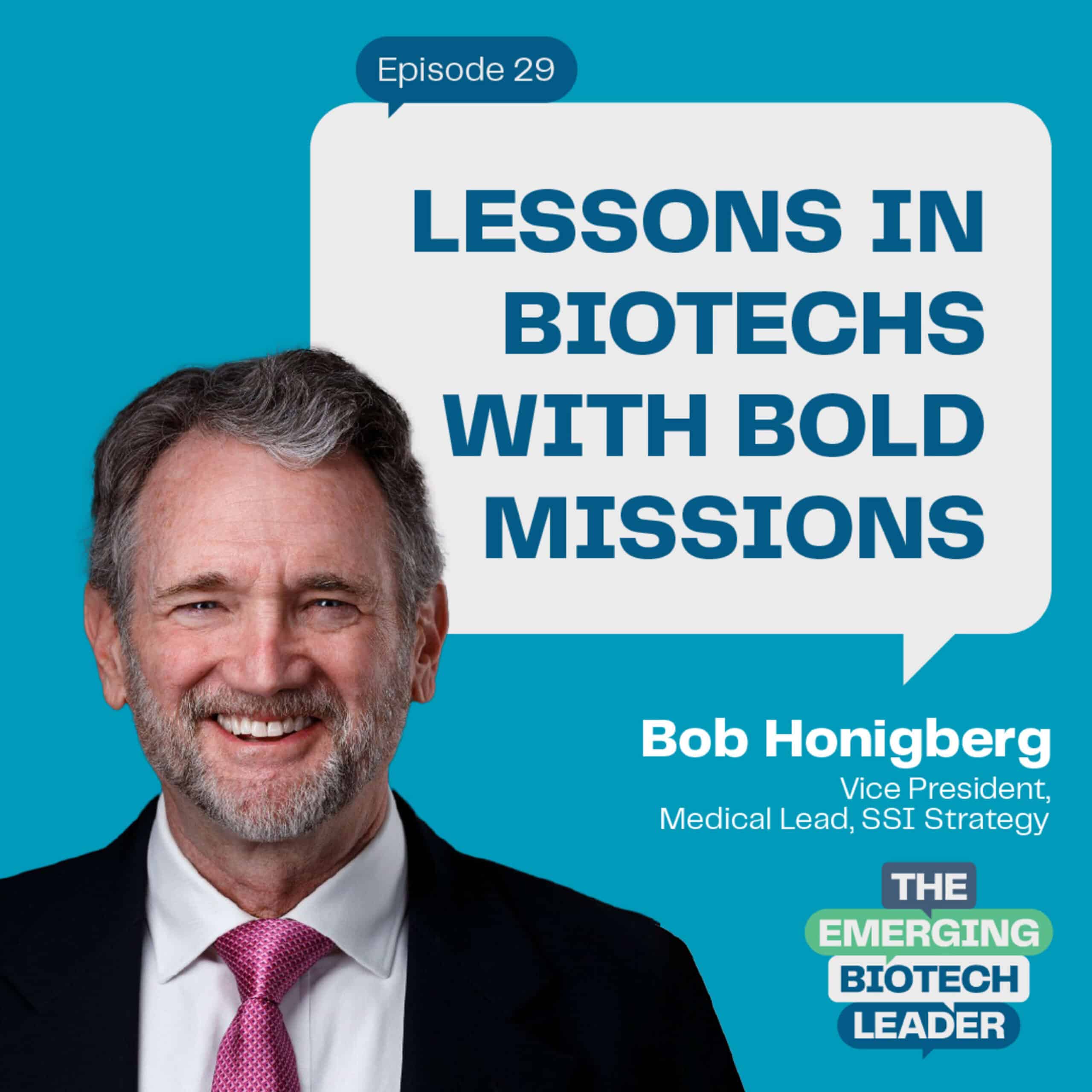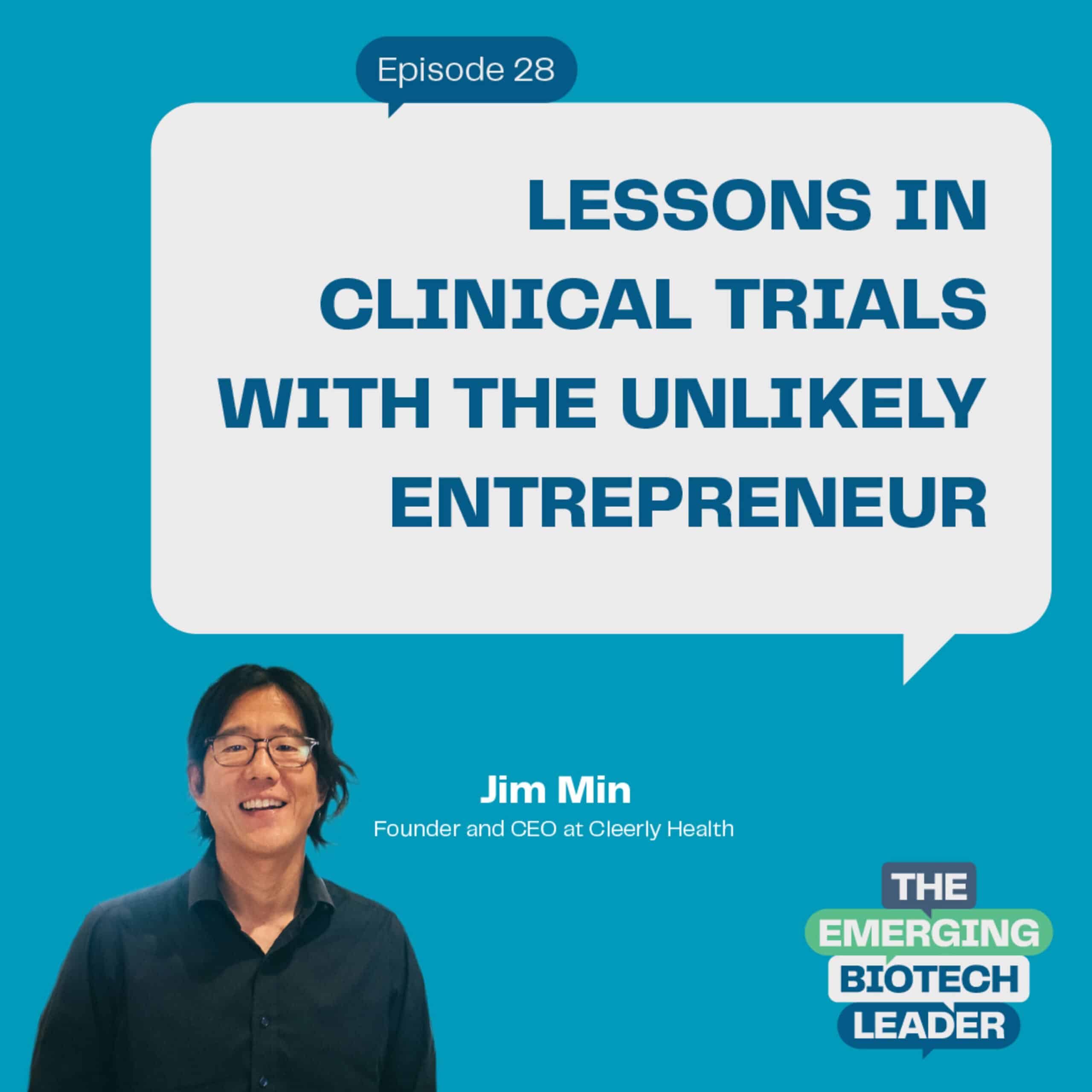
“Getting a drug to market is a change journey. The whole process is a change journey. And we pass through so many different stages and gates on the way there: we need to adapt almost regardless of circumstances, even if everything goes according to plan, we have to shift.” Johan Stromquist, President, NDA Group
As the quote above alludes, launching a biotech is never a linear journey. While there are tried and true processes and a documented multidisciplinary approach in bringing assets to market, adaptation to change is also required.
And there’s no better trio equipped to discuss this vital topic–navigating change when planning and bringing innovations forward–than Kim Kushner, Doug Locke and Johan Stromquist.
During this Episode, a first for Johan in the guest seat, you’ll hear a candid discussion on the various transformational stages organizations go through at major inflection points of growth, both funding and clinical. We hope you agree, this topic could not be more timely or relevant. Today’s market and landscape are forcing all sorts of change regardless of biotech companies being in the early stages of corporate build or, much further along in maturity.
On that note, here are a few of the overarching themes to listen out for during this episode:
- Navigating people and resource sensitivities as a leader
- How to move past paralysis analysis when revising the former plan for a new one
- Scaffolding regulatory pieces as a framework for planning
- Assessing when to bring in council, partners and vendors as a stop gap and expert resource
True to form in each episode of The Emerging Biotech Leader, there is so much more covered including the types of people you need on your team (build vs operate talent), their key strengths and how to ensure you have both at the right time. With that foundation set, let’s delve into some of the quotes and soundbites from Episode 26.
On Building, Fixing and Meeting Change Head On
Kim kicked off this topic and conversation by first inviting Doug to weigh in on how leaders are thinking about their design–where to start and where to build–across inflection points.
Here’s what he’s been seeing in terms of the market and shifts. “I’ve been in about 15 meetings in the last three months where our corporate sponsors, usually the CEO, sometimes the CMO, or R+D regulatory head, they’re up against some major change in the company. I mean, we all know what’s going on in the marketplace right now with the cost of capital: interest rate, debtor and lender agreements are tough. Some movement there is precipitating a fresh look. At the timeline of the company relative to market facing goals and capital, you know the questions are, ‘Can we afford this program? Do we need to look at what we were going to deliver and are we going to change the timeline? Do we need to change the timeline because we don’t have the bandwidth we thought we had?’ All of those issues are on the table. So a lot of different use cases of, ‘I have plenty of capital, but what we have is unworkable. I have limited capital and I have a goal that’s too grand. And what do we do about that?’ This is the basis of the inflection point you’re talking about.”
Doug goes on to detail the amount of people, processes and systems impacted by these changes. Leaders have to think through funding, the talent on the team, the marketplace, their board, and their investors as well.
If you should find yourself at a similar crossroads, Doug, Kim and Johan discuss how to start navigating this and here’s a hint. As cliche as it may sound, you don’t have to navigate it alone.
Johan shares, “I think that one of the greatest signs of leadership is the courage to ask for help. I think that is so important when you find yourself in these quite precarious leadership positions in biotech companies.”
In terms of the types of changes leaders are evaluating, Doug does go on to clarify. “Some are looking for a form of major intervention, maybe like a RIF or total change of go to market and others are seeking counsel. I.e ‘How can I make this happen?’”
As you’ve heard on the show before, it isn’t uncommon for early stage biotech founders and teams to have a lot to figure out. Kim sheds more light. “There’s the concept that organizations in their earliest stages are trying to figure out, ‘Where do I build my initial programs? What country am I going to for my phase 2 because that seems to give me the greatest path forward from a regulatory perspective? And I need to figure out, ‘How am I going to get to market sooner than later somewhere?”
On the opposite side of that early stage planning and analysis, is the “fix stage” that Doug described when kicking this conversation off.
Listen more for Kim’s distinction between the two, early stage vs fix stage companies, around 4:40.
As a key contribution to this topic, Johan shared that regardless of stage, building a biotech and getting a drug to market is a change journey.
“Even if everything goes according to plan, we have to shift. We have to adjust and we have to make changes because the people in the lab coats are not the people that are going to run our trials and the people who are running our trials are not the people who are going to sell our product, right? So there are these really important transformation points that every company that ultimately becomes successful just has to go through.”
The Role of Regulatory In Planning
Another key piece of advice and insight from Johan pertained to regulatory. “At the end of the line, it’s going to be that regulatory approval that ultimately provides the culmination of all of these years of success. I think from my point of view, and having
had the great fortune and honor of working in the regulatory space for the last 20 years, I think is very important. And it starts with scaffolding. I would say this is required to start forming the foundation for a meaningful plan and a meaningful organization going forward.”
Johan’s answer sparked a follow up from Doug, “If I could pick up on a piece of what Johan just said, the sliver of work, the regulatory, I mean, that reminds me of a conversation last week. It was with a new CEO in an established company. It’s a rebuild of sorts, right? New CEO in a company that has been around a bit. This CEO came from a company that was well funded and much larger. So they had a broader team, had a viable clinical organization, had a strong regulatory partner that reported to them, yet in the new company, it’s not there. It’s that trusted voice, that hallway. You know, walking down the hallway and getting a point of view, if not a more rigorous structured milestone type activity, it’s not there.”
We’ll let you hear for yourselves the main reason Doug felt compelled to share this story–it lays the groundwork for the next set of challenges a leadership team now needs to evaluate: the people part–specifically the build skillset vs the operate skillset.
Kim shared a poignant perspective on this as well. “It is often not an FTE or a full-time mindset of what you need to get from A to B, but you do need to bring in a lot of different, diverse voices and experiences. The build phase requires a lot of different thoughts and skill sets to get the infrastructure and scaffolding, as Johan was describing, up and running. Once that scaffolding is there, those leaders are fantastic at operating and there’s nothing to be taken away from that role because that is absolutely critical to bring drugs to market. But if we’re not setting up that scaffolding, we wind up in a rebuild or a fixed situation because we can’t go back.”
Awareness and foresight on all of these points is critical but the key to succeeding from day one is in the execution. For example, Doug does caution that one of the more common pitfalls occurs when leaders conflate their build and operate phase and now, “they’ve got an operate team in something that’s not been built the right way.” Again, self-awareness and knowing one’s lane (build vs operate) cannot be overstated here.
In fact, Doug circles back to the very first Episode of the Emerging Biotech leader, “Leading Within a Biotech Unicorn – with Dr. Suku Nagendran” as a great example of a seasoned operator, a biotech leader who knew what they were good at, knew what they were not good at, and who brought the right people around to do the things they’re not good at.
Johan adds, “When we consider these transformation points in time, there are so many advantages to thinking of working with resources in a partnership.” Listen for his suggestions on how to enable early success, especially around the regulatory roadmap, with a partner at your side.
On The Final Do’s and Don’ts To Consider
From her observations and experience, here’s one of the key blockers Kim sees over and over again for biotechs that are struggling. The culprit is that they’re doing a lot of scenario planning, but they don’t have a single path forward.
“They are keeping options on the table. And they certainly should. Most of them are going to wind up in a due diligence process at some point, and are likely going to get certain questions that they may or may not be in a position to really answer.”
As they scenario plan, the narrative that’s running is, “How do I maintain maximum flexibility for the various scenarios that I could go down based on each one of these inflection points?”
As a final callout, Kim shares that it’s really critical to be thinking about how to bring those different disciplines at each inflection point to maintain the flexibility as the organization is growing.
In response, Doug shares, “What we’re moving toward is more skill mobility and singular partners that provide that type of service so that you can have continuous handoffs between the phases.”
You’ll hear him expand further on the flexibility rationale of this, the ROI rationale, as well as the cost savings rationale compared to the rigidity of the FTE model that many biotechs are starting to forgo.
Adding one final piece on the change and evolution of a biotech, Johan shares, “I’m coming in from the regulatory angle, but I think it’s equally relevant for any discipline in this space: it’s not going to be the same challenges that you face tomorrow as you faced yesterday. The program as it develops is naturally going to mature and new requirements are going to come in all the time. And we’re aware of this. Yet, we try to find some kind of single plug solution.”
Johan also shares a very powerful analogy on using a more flexible model, especially for regulatory, to help you avoid having a hammer with a box full of screws.
The only way to hear it entirely is to hit that play button!
We’ll be back again with more guests and more insights like these–you can catch up on all previous episodes of the Emerging Biotech Leader here on the SSI website.


